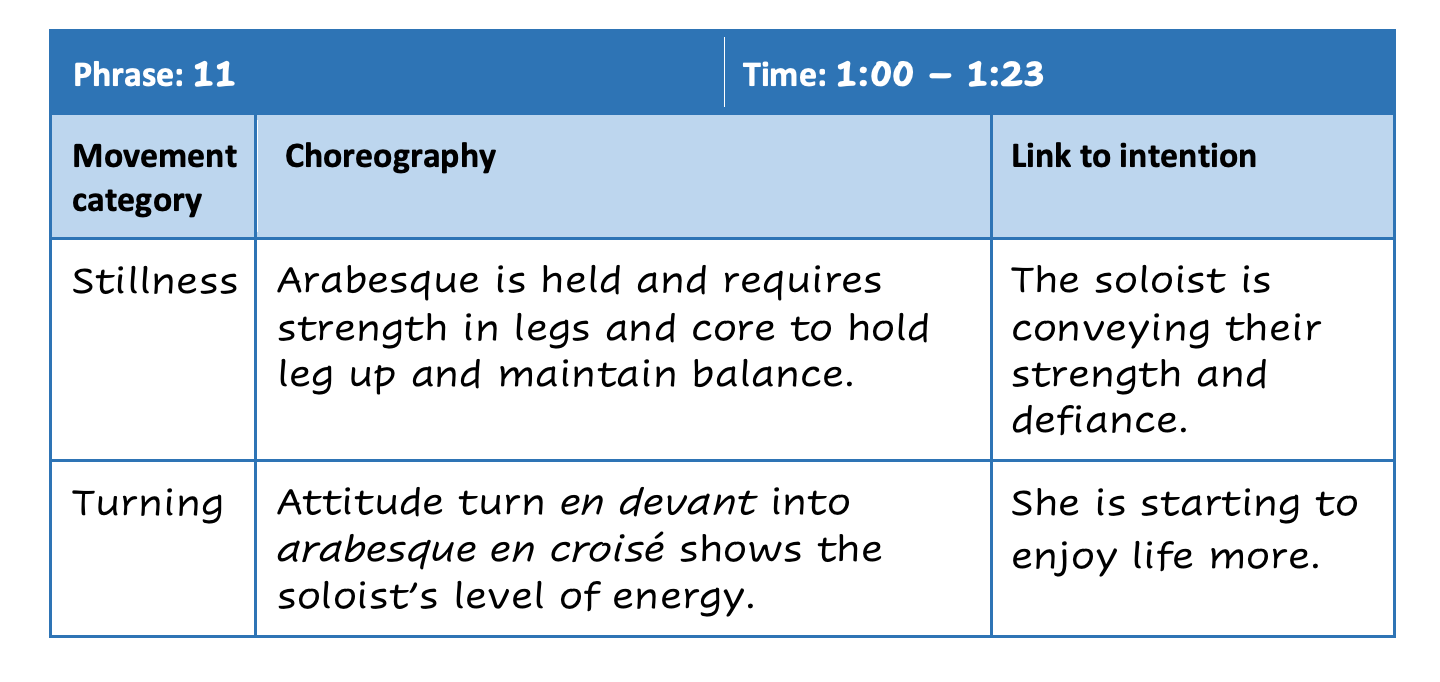In Dance, students identify, analyse and evaluate:
- how they and other dance practitioners communicate ideas and intentions through dance
- key movement vocabulary.
Students apply this knowledge to dances they make and perform. Writing about performances encourages students to record, reflect, respond, and interpret meaning.
Planning is a key step in writing recounts of movement and students require support to select key aspects of movements as well as correct terminology and use of dance language. Students also need to understand the structural and formal features of the performance they view to prepare them for written analysis.
Using graphic organisers is one way that teachers can support students to plan for recounts and analyses of performances. In Dance, students can use graphic organisers to:
- undertake guided viewing of dance works
- identify movement and form to support the writing of recounts
- interpret and make meaning from dance works
- explain influences of dance works
- analyse their own dance works and those of others.
The following strategy supports students to identify the physical skills and movement categories in specific phrases of dance performances. A phrase in dance is a short choreographic fragment of a larger work.
-
Before viewing a performance or reflecting on own performance, students are provided with a graphic organiser, like the one below.
- The teacher introduces the work to be viewed, the phrase and timing of the phrase within the work.
- The teacher explains the components and examples in the graphic organiser including:
- identifying the phrase and time
- identifying the key movement vocabulary.
- describing the choreography
- linking to the intention.

- Students are asked to refer to their Dance glossaries and other resources to support their completion of the graphic organisers.
-
During viewing, the teacher shows a short movement from the performance and models the use of the graphic organiser to note key features.
- The students note their observations.
-
After viewing, the teacher and students discuss their observations, and drawing on two or three examples, jointly construct components of the graphic organiser. The teacher encourages students to use Dance-specific terminology in their responses.
- Students form pairs to complete the graphic organiser.
Curriculum links for the above example:
VCADAR038,
VCADAR039,
VCADAR045,
VCADAR046.